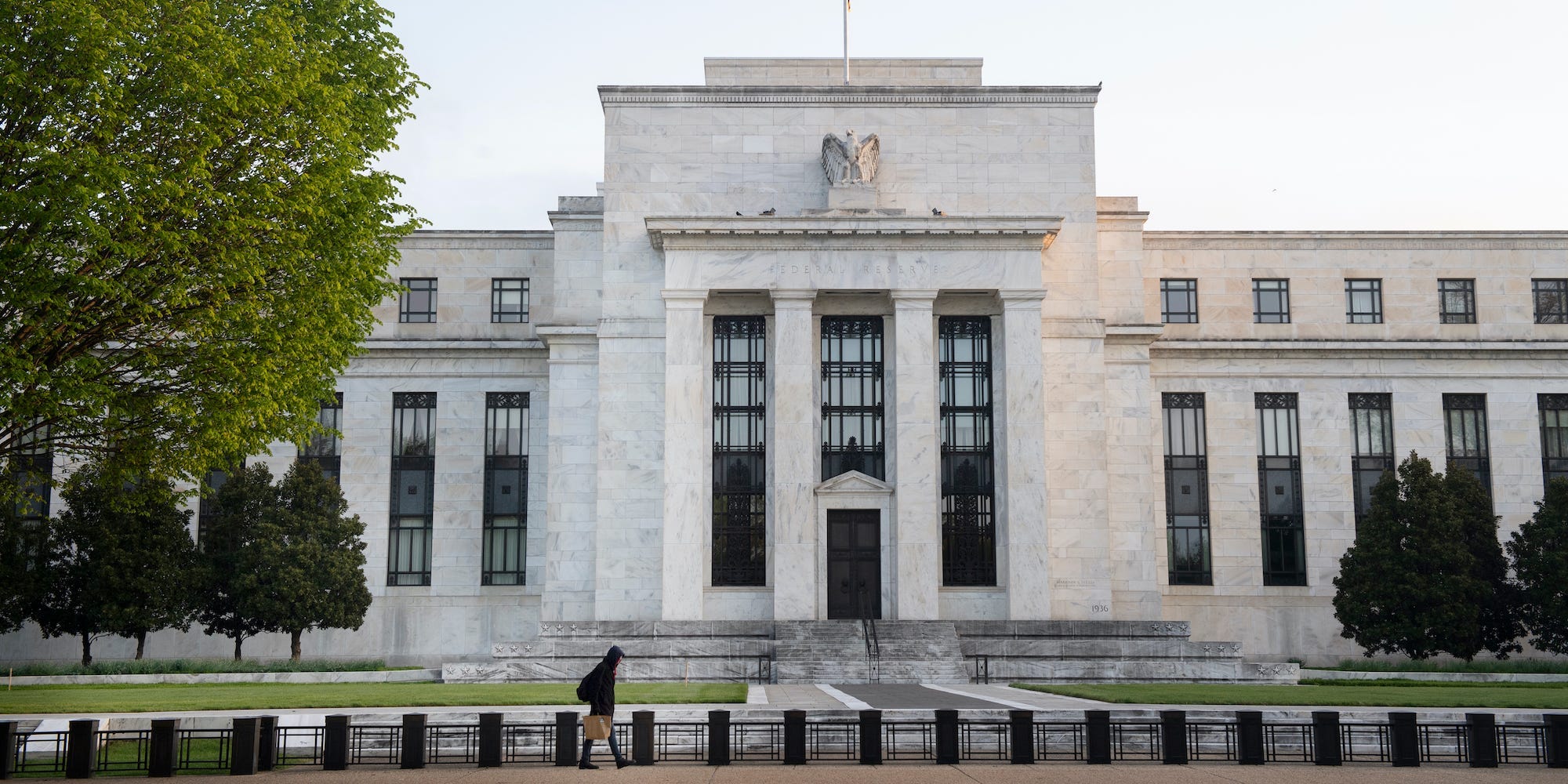
- Federal Reserve policymakers expect the US to stage a full recovery in 2021, according to projections published Wednesday.
- The Federal Open Market Committee’s median estimate for 2020 growth landed at -2.4%. The median expectation for 4.2% growth in 2021 fully offsets the pandemic-induced slump.
- Committee members expect the unemployment rate to fall to 5% next year from 6.7%. The rate isn’t projected to reach pre-pandemic lows until 2023, according to the forecasts.
- The projections come alongside the Fed’s latest policy meeting. Central bank officials elected to hold interest rates near zero and maintain the current pace and composition of its asset purchases.
- Visit Business Insider’s homepage for more stories.
The Federal Reserve revealed new economic estimates on Wednesday that see the US economy staging a healthy recovery through 2021.
Federal Open Market Committee members expect US gross domestic product to contract 2.4% in 2020 before climbing 4.2% in 2021, according to projections published Wednesday. The forecast signals the country will fully recover to pre-pandemic levels by the end of next year. Growth is seen reaching 3.2% in 2022 and slowing further to 2.4% in 2023.
The committee’s median estimate for 2020 unemployment reached 6.7%, implying December’s nonfarm payrolls report won’t bring an improvement to the rate. The Fed then expects unemployment to drop to 5% in 2021. The rate won’t return to pre-pandemic lows until 2023, when the central bank expects it to reach 3.7%.
The estimates come alongside a relatively uneventful decision from the committee. Members decided to hold interest rates near zero and maintain their current pace and composition of asset purchases.
Some economists expected the central bank to either adjust its asset purchases or offer new guidance for the purchase program. Such updates are at least pushed back to the FOMC's January 26 to January 27 meeting.
The central bank currently buys $80 billion of Treasurys and $40 billion of mortgage-backed securities a month.
The Fed's Wednesday statement clarified that its asset purchases will continue at their current pace until "substantial further progress" is made toward reaching its inflation and employment goals. The central bank updated the targets in August, signaling it won't lift interest rates until the US achieves maximum employment and inflation trends above 2% for a period of time.
This story is live, please check back soon for updates.

